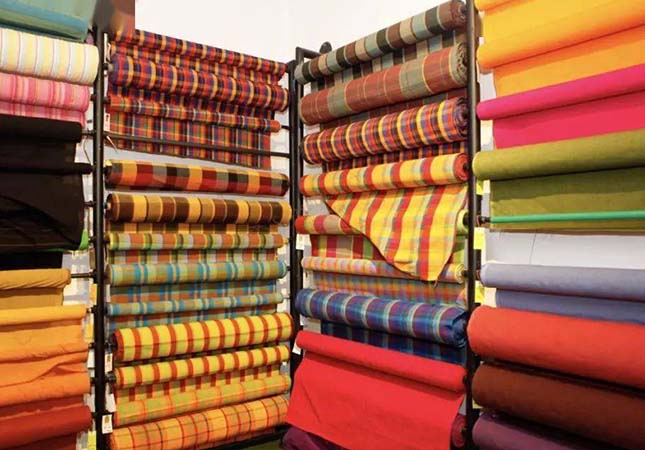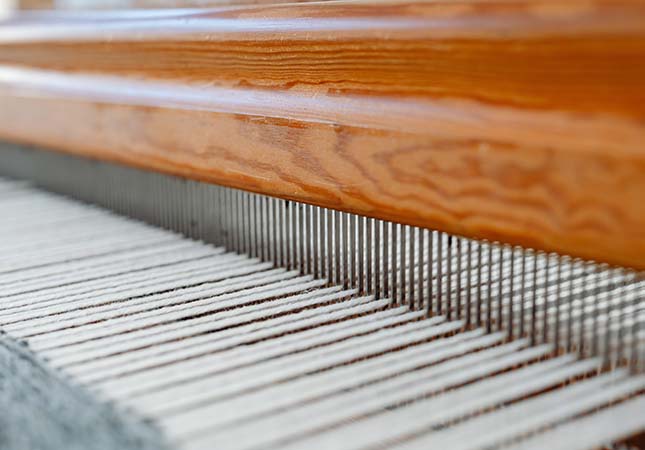Throughout China's history, rulers of various dynasties have placed equal importance on both agriculture and sericulture, promoting the idea of "agriculture and sericulture together."
Chinese silk &fabric has a long history of intricate and diverse patterns, ranging from small and large flowers to geometric and natural forms, all adapted to the structure and practical use of silk. These patterns reflect the artistic decoration of the same period, showcasing the aesthetic beauty of form and auspicious meanings that traditional Chinese craft decorative patterns emphasize. Silk brocade, with its luxurious and noble quality, has been cherished by people around the world, and the various weaving techniques used in silk production, combined with unique artistic ingenuity, have created a glorious history spanning over 3,000 years.

A popular saying even suggests that if a woman does not raise silkworms, she will suffer from the cold. The sound of silk being spun was said to be heard for hundreds of miles. As economic and cultural exchanges with foreign countries deepened, the silk trade flourished, leading to increased communication between China and neighboring countries and the formation of the famous Silk Road. This ancient route originated from Chang'an in ancient China, crossed Gansu and Xinjiang, extended westward through Central Asia and West Asia, and ultimately reached Europe.
Westerners were particularly enamored with Chinese silk, with its price almost equivalent to that of gold. In fact, it's said that in the first century, an ancient Roman emperor wore a silk robe produced in China to watch a play, adorned with pearls and jewels, creating a sensation in the entire theater. This led to a desire for Chinese silk clothing and earned China the moniker "land of silk." Over time, the development of silk became even more rapid, leading to the establishment of three Silk Road routes and a "Maritime Silk Road."
The Silk Road not only spread commodities but also a way of life and national culture. The elegance, softness, delicacy, warmth, and brilliance of silk have inspired Westerners' romantic imagination. However, due to the limited production of mulberry silk, which is a precious and scarce resource, not everyone could enjoy silk like the emperors, nobles, and officials. The basic clothing needs of the vast lower-class masses were more urgent and important than the luxury of the nobility.
The emergence and evolution of sculpture is deeply connected to human production activities and influenced by various social ideologies, including religion and philosophy, throughout different eras. Primitive forms of sculpture, such as stone and bone carving, date back to the Paleolithic Age. As a relatively permanent art form, sculpture is commonly regarded as a three-dimensional, static, and tangible representation of reality through visual spatial images. Consequently, it is considered the most representative form of plastic art, static art, and spatial art.
Sculpture generally refers to the creation of visual and tangible artistic images using three methods: carving, engraving, and modeling. This involves utilizing a range of plastic materials, including gypsum, resin, clay, wood, stone, metal, jade, agate, fiberglass, sandstone, and others that can be carved or engraved. The objective is to reflect social life and express the artist's aesthetic feelings, emotions, and ideals. While carving and engraving tend to reduce the plasticity of materials, modeling increases their plasticity to achieve the purpose of artistic creation
Textile Techniques Evolution.
The evolution of ancient and modern textile techniques has always been driven by the nature of the textile raw materials, underscoring the crucial role of raw materials in textile technology and Textile Machinery. In ancient times, natural fibers such as wool, flax, and cotton were widely used for textile production across various countries worldwide, with short fibers being the most common. For instance, the Mediterranean region primarily relied on wool and flax for textile production, whereas cotton was predominantly used in the Indian Peninsula. However, ancient China stood out for its extensive use of long fibers, specifically silk, which is the finest, longest, and thinnest among all natural fibers, making it ideal for weaving intricate patterned jacquard fabrics. The widespread use of silk fibers significantly spurred the development of ancient Chinese textile techniques and machinery, making silk production technology the most distinctive and representative textile technology in ancient China.
SUNTECH Textile Machinery is a distinguished manufacturer of textile machinery with a rich legacy of automation and intelligent manufacturing technology for textile and warehousing equipment. SUNTECH's state-of-the-art core technologies have garnered global recognition.
SUNTECH Textile Machinery has the range of products encompasses almost all fabric types, including but not limited to pinking machine, non-woven machine, beam truck, meltblown machine, fabric cutting machine, motorized beam trolley, beam storage, and fabric inspection machine. SUNTECH Textile Machinery continues to lead the textile industry with its innovative approach and extensive experience. We welcomes quotes and cooperation opportunities with open arms.
Chinese embroidery boasts a long history that dates back to the Neolithic age, over 7,000 years ago, when the Hemudu people used bone needles for textile production. Embroidery in China has continued to evolve along this path for millennia, starting from embroidered clothing, expanding to embroidered daily necessities for household use, and then advancing to embroidered art pieces for appreciation. Chinese embroidery can be broadly classified into two types: embroidered articles for daily use and embroidered works of art that showcase calligraphy and painting themes.
The origins of textile production in China can be traced back to the legend of Lady Hsi-Ling-Shih, who was believed to have cultivated silkworms and spun silk. Archaeological evidence of bone needles found at the Upper Paleolithic site of Shan Dian in China indicates the earliest known textile production. The invention of the spinning wheel during the Neolithic period improved silk production efficiency. In the Western Zhou dynasty, primitive textile machines such as the spinning wheel and loom emerged. The drawloom was invented during the Han dynasty, and the Ming dynasty saw the publication of Song Yingxing's book "The Exploitation of the Works of Nature," which documented the technology of textile production.

Silk is one of China's most renowned textiles, and its trade has facilitated cultural exchange and transportation between the East and West. The Han dynasty (206 BC - 220 AD) and Tang dynasty (618 AD - 907 AD) were two of China's golden ages for silk production, reaching the peak of development and leaving behind many artifacts. China is not only the birthplace of silk, but also the sole country to have this handicraft industry. The ancient spinning wheel can be classified into two types based on their structure: hand-operated spinning wheels and foot-operated spinning wheels. Images of hand-operated spinning wheels have been found in Han dynasty artifacts, indicating their widespread use during that time. Foot-operated spinning wheels were developed based on the hand-operated model, and the earliest image data was found in stone paintings from the Eastern Han dynasty in Sihong County, Jiangsu Province. Hand-operated spinning wheels require one hand to operate the spinning wheel and the other hand to spin yarn, whereas foot-operated spinning wheels are powered by feet, allowing spinners to use both hands for spinning and greatly improving efficiency. Since their inception, spinning wheels have been the most popular spinning tool, and even in modern times, some remote areas still use them as the main spinning tool.




